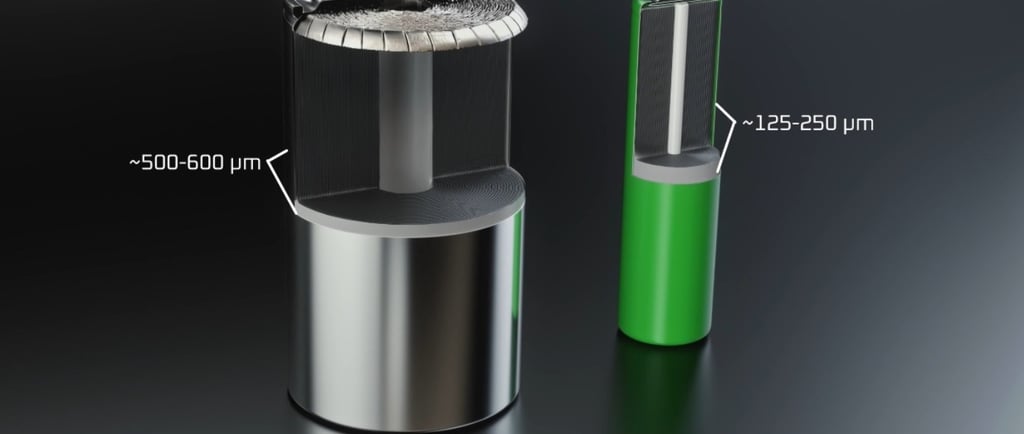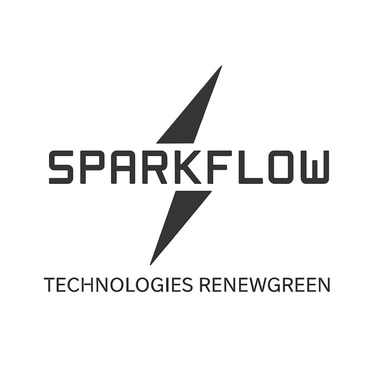4680 Cells — The Next-Gen Cylindrical Battery Explained
4680 cells are next-generation cylindrical lithium-ion batteries (46×80 mm) that can use different chemistries like NCA, NMC, or LFP with graphite or silicon anodes. They offer higher energy density, lower cost per kWh, and support structural battery packs, but face challenges in manufacturing, thermal safety, and cycle life.
9/30/20252 min read


4680 Cells — The Next-Gen Cylindrical Battery Explained
Intro — what is a 4680 cell?
The name 4680 describes the cell’s dimensions: 46 mm diameter × 80 mm height. It’s a large-format cylindrical lithium-ion cell design popularized by Tesla (announced in 2020) and since adopted or studied by other EV and battery makers. The 4680 aims to reduce cost per kWh, increase energy and power density, and simplify pack design
Why the 4680 Matters
Higher energy per cell. Bigger cells store more energy, which reduces the number of cells needed per pack.
Lower cost per kWh (potential). Fewer parts, simpler assembly, and structural pack designs help reduce costs.
Structural pack integration. The 4680 enables “structural battery packs” where the pack supports vehicle chassis.
Better current flow & cooling. The “tabless” design reduces internal resistance and spreads heat more evenly.
Fewer connections. Fewer welds and interconnects simplify manufacturing.
4680 Cell Chemistry Explained
The 4680 is only a form factor — the chemistry inside can vary. Here are the main chemistry options:
🔋 Cathode Materials (Positive Electrode)
1. NCA (Nickel Cobalt Aluminum Oxide)
Very high energy density → more EV range.
High nickel, low cobalt → lower cost than older chemistries.
Used by Tesla.
Tradeoff: Safety is more challenging, requires advanced thermal control.
2. NMC (Nickel Manganese Cobalt Oxide)
Balanced option used by LG, Panasonic, CATL.
Safer than NCA, still high energy density.
Expensive due to cobalt and nickel content.
3. LFP (Lithium Iron Phosphate)
Lower energy density but very safe and cheap.
Extremely long cycle life.
Used for budget
⚡ Anode Materials (Negative Electrode)
1. Graphite (standard in most lithium-ion batteries)
Stable, low-cost, long cycle life.
2. Silicon-Graphite Composite
Tesla experiments with silicon blends.
Stores ~10× more lithium than graphite → higher energy density.
Challenge: Expansion & cracking, needs additives and binders.
🧪 Electrolyte
Liquid electrolyte (LiPF₆ salt in organic solvents) is common.
Requires additives for:
SEI stability (on silicon anodes),
Fast-charging performance,
Reducing flammability.
Solid-state versions are in R&D but not yet commercial in 4680
Benefits (System & Real-World)
Higher pack energy density → longer EV range.
Lower costs from fewer cells and welds
Simpler assembly with structural packs.
Weight savings at the vehicle level.
Fast charging potential (with optimized chemistry).
Technical Challenges
Manufacturing scale. Larger cells are harder to produce consistently.
Thermal runaway risk. A failing large cell releases more energy.
Electrode mechanics. Thick electrodes can cause lithium-ion transport issues.
Fast-charging & cycle life. Harder to optimize with bigger capacity.
New tooling costs. Requires brand-new production lines.
Applications
Electric vehicles (EVs): Both long-range and budget models (chemistry-specific).
Grid & stationary storage: LFP-based 4680s are ideal.
Commercial/industrial uses: High-capacity, rugged packs.
Future Outlook
Tesla & others will continue optimizing NCA/NMC with silicon anodes for premium EVs.
CATL and BYD push LFP-based 4680s for safe, low-cost vehicles.
Solid-state research may influence future 4680 generations
Takeaway
The 4680 is a platform, not a single chemistry.
Premium EVs: NCA/NMC + Silicon for maximum range.
Affordable EVs & Storage: LFP + Graphite for safety, cost, and long life.
This flexibility makes the 4680 a powerful format — but its success depends on solving manufacturing yield, thermal safety, and chemistry-specific challenges.
